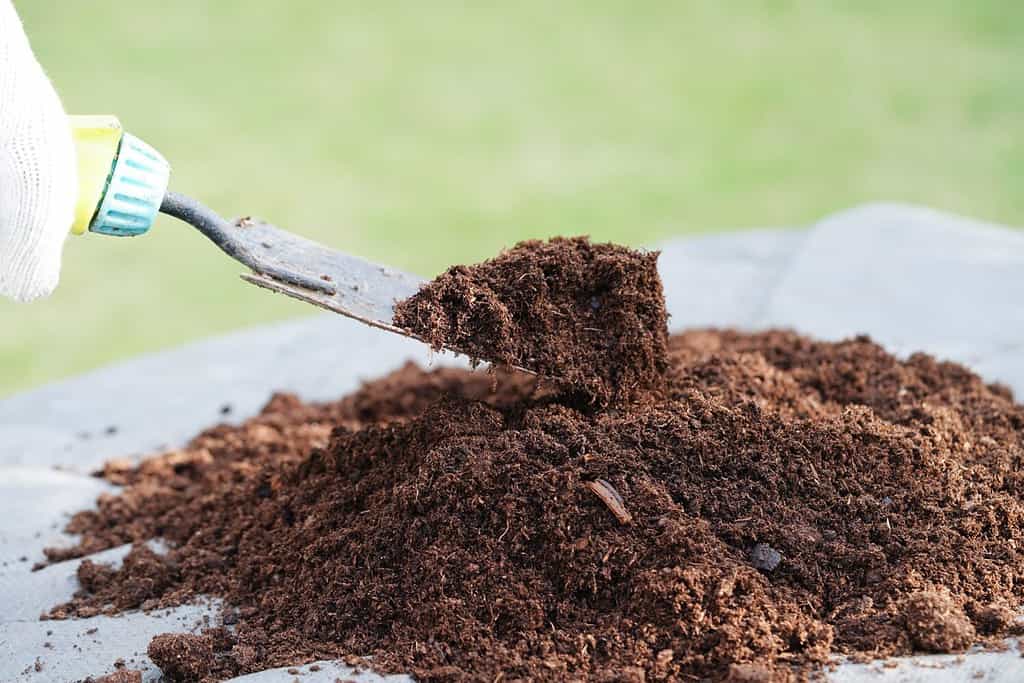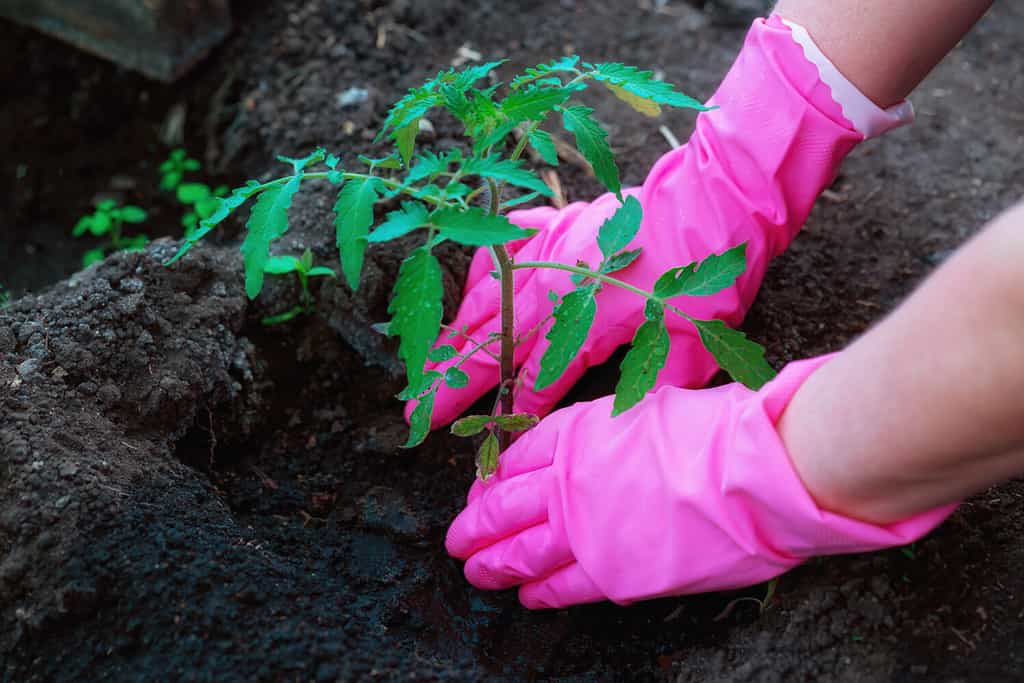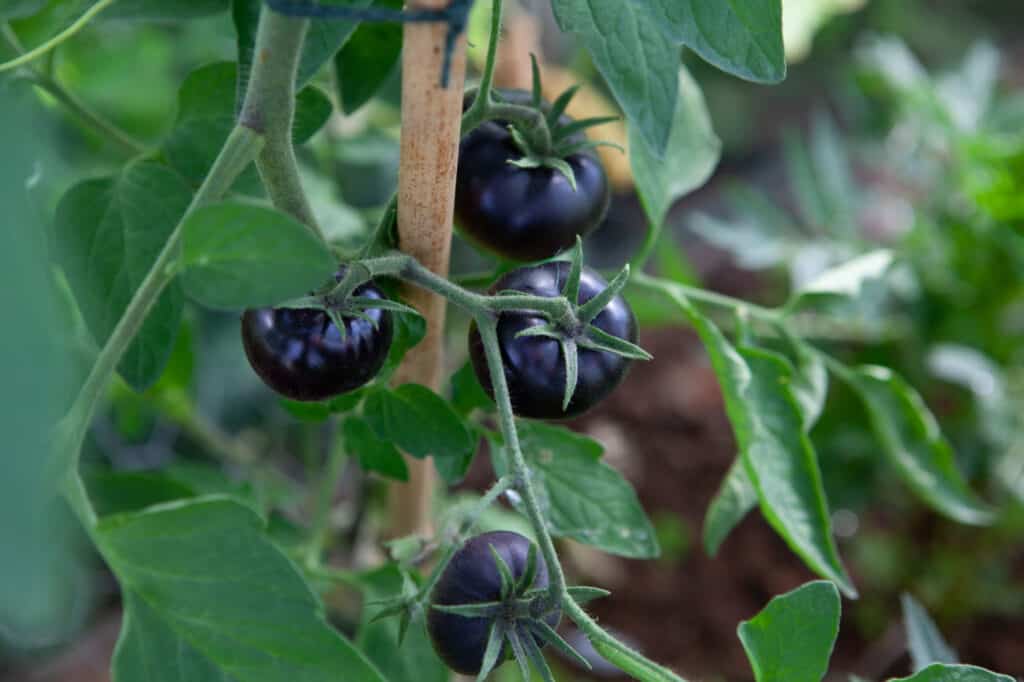Getting ready to plant some tomatoes in Oregon? Find out when to do it, along with your best tips and plans for action to ensure healthy production all season long.
When to Plant Tomatoes in Oregon

You could plant tomatoes in Oregon any time between early May to early October, depending on the varieties you choose.
©Digihelion/Shutterstock.com
The general rule of thumb for planting tomatoes in Oregon is doing so between early May and early October, depending on the variety. The USDA Hardiness Zone in which you live will determine when you should plant your tomatoes in Oregon. Oregon contains zones 4b to 9b, so dates vary significantly. These roughly fall about one day to one week after the last predicted frost each spring. Check your local almanac for the predictions so you know when exactly to plant.
Best Cultivars and Varieties of Tomatoes in Oregon
The best tomato varieties and cultivars to plant in Oregon include:
- Sungold
- Sungold cherry
- RiesentraubeCherry
- SebastopolCherry
- Yellow PearCherry
- Principe BorgheseCherry
- Thai Pink EggCherry
- Plum LemonCherry
- Stupice
- Oregon Spring
- Legend
- Alaska
- Siletz
- Silvery Fir Tree
- Paul Robeson
- Black Cherry
- Green Zebra
- Eva Purple Ball
- Brandywine
- Black Prince
- Speckled Roma
Tips for Planting Tomatoes in Oregon
#1 — Plant Tomatoes Where They’ll Receive Full Sun
Tomatoes need a lot of sunlight, with a full 8 hours daily. Be sure to plant your tomatoes where they’ll get loads of light each day for the fullest harvest.
#2 — Prepare the Soil

Be sure to mix in compost for soil for your tomatoes to ensure healthy, bountiful plants.
©sweet_tomato/Shutterstock.com
Before you get to planting, add about 2 to 3 inches of compost or “barnyard” fertilizer to the trenches where you plant the tomatoes. Use a trowel or hand rake to mix the fertilizer into the soil, turning over the entire bed.
#2 — Water Tomatoes According to Need
The weather greatly impacts a tomato plant’s need for water. The hotter, dryer the weather, the more the tomato needs. The cooler and moister the weather, the less it needs. A good rule to follow is watering your tomato plant every four or five days in hot weather without rain, providing a thorough soaking. If the soil is dry, provide more water, roughly one inch, per watering.
#3 — Choose Beds and Containers Per Your Needs
Tomatoes are fairly flexible plants, so they do well as both container plants and bed plants. You can plant them in standard garden beds, upside down tomato planters, standard containers, or raised beds. The key is making sure each plant has enough space to grow properly. Secondarily, choose whichever planting option is going to work best for your personal needs.
#4 — Plant Tomatoes 24-Inches Apart

Tomatoes in Oregon need plenty of room to grow. Plant them 24 inches apart to allow the roots to fully form and spread.
©Paul Maguire/Shutterstock.com
Tomato plants need plenty of space for spreading out. Be sure to plant each tomato about 24 inches from the next.
#5 — Use a Soaker Hose or Drip System for Watering Tomatoes in Oregon
For best results, and easier growing, use a soaker hose or drip system for watering your tomato plants. This helps get the water deeper into the roots and soil and away from the leaves where mildew may form.
#6 — Cover the Beds with Opaque Plastic to Increase Yield
For a better yield, cover the soil around your tomatoes with opaque plastic. This plastic “mulch” helps to warm the soil and keep out weeds, meaning you could have as much as a 20-percent bump up in yield. The plastic also helps soil retain moisture, so you have to water less frequently.
#7 — Water Seedlings Before Planting Them

You can plant part of the tomato plant’s stem, it will also grow roots. Be sure to water the seedling before you plant them for best results.
©Bestkadr/Shutterstock.com
Before you plant your tomato seedlings, water them thoroughly about 30 to 60 minutes before the planned transplantation. This helps the plants as they move into new terrain. Good timing for this is watering the plant, then heading out to the garden to dig the holes.
#8 — Plant the Tomatoes in Trenches
When you’re ready to plant your tomatoes, dip deep, long trenches instead of holes for the plants. Do this when the first leaves appear on your seedlings and transplant the tomatoes into the trenches about 6 inches deep. Place the plants 24 inches apart for full root development and the most lush greenery and fruit production possible.
#9 — Add Organic Fertilizer
Before planting your tomatoes, sprinkle about one-third cup of organic fertilizer into each hole. Then, mix the fertilizer in with the soil. Some fertilizers will recommend other amounts, so read the packaging and use the correct volume.
#10 — Stake and Tie Your Tomatoes in Oregon

For best results, stake your tomatoes instead of relying on the tomato cage to keep them growing.
©Jess Gregg/Shutterstock.com
Tomato cages are not enough support for growing healthy plants. Be sure to stake your tomatoes as high as possible once the plants have grown up a bit. This helps to keep the plants secure and keeps the fruit off the ground out of water or crushing locations.
#11 — Use a Trellis System, if At All Possible
If possible, particularly if you’re growing more than a couple of tomato plants, use a trellis system to fully support and cage your plants. Carefully plant the seedlings or plants around the trellis, then use ties to ensure the plants climbs properly. Wait until seedlings reach the proper height to easily reach the trellis before tying them up. This helps keep the plants from flopping over and ensuring a stronger, healthier plant. Which, in turn, provides you with a more bountiful harvest.
#12 — Cover Tomato Cages with Spun Row Covers
Find a cover for your tomato cages to prevent insects and rodents from stealing your crop. A good cover allows sunlight through, so think sheer cloth, netting, or things like cheesecloth. You can also purchase tomato or plant covers from nurseries and other plant sellers. Use clothespins to clip the covers on or use heavy objects to weight down the edges if necessary. This keeps critters out and prevents the wind from uncovering your plants.
When to Harvest Tomatoes in Oregon

Tomatoes, depending on when you plant them in Oregon, may be ripe between July and mid-October.
©sadecestock/Shutterstock.com
Tomatoes in Oregon may be ripe for the picking anywhere between July and mid-October, depending on your USDA Hardiness Zone and the specific varieties you grow. If you grow them hydroponically, indoors, or in insulated greenhouses, you may even be able to harvest year-round.
The photo featured at the top of this post is © Digihelion/Shutterstock.com
Thank you for reading! Have some feedback for us? Contact the AZ Animals editorial team.







